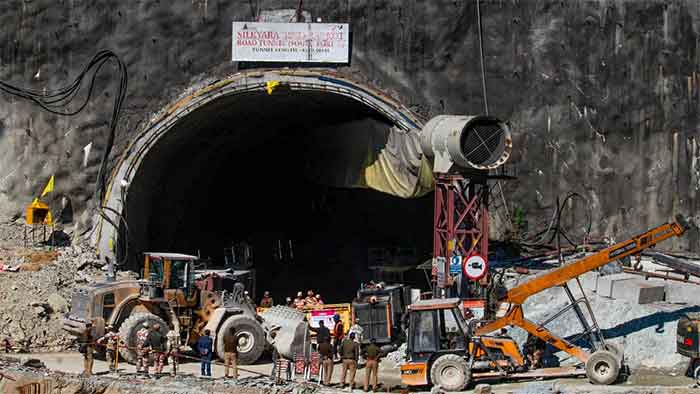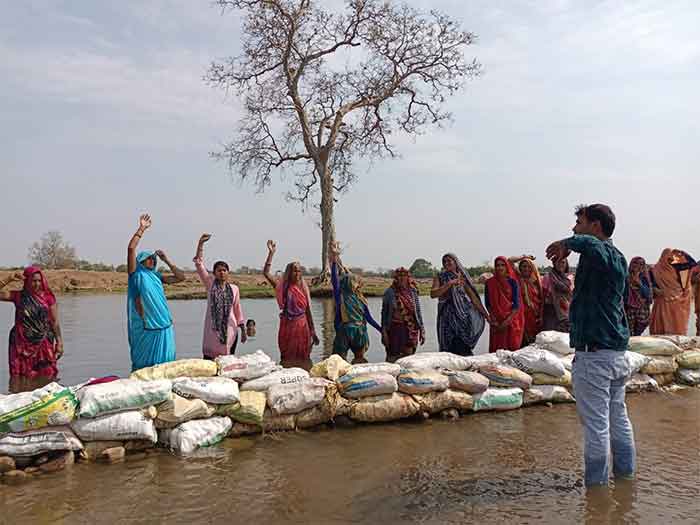
Recent reports of the International Labor Organization have confirmed the urgency of according higher priority of issues relating to safety of workers. These statistics tell us that nearly 3 million workers die in a year due to occupational diseases and injuries. This implies that about 8000 workers die on any typical day due to occupational risk factors (including occupational disease and injuries).
As many as 744,000 deaths in a year are caused because of working hours being too long. 450,000 are caused due to exposure to particulate matter, gases and fumes. About 110,000 deaths are caused due to exposure to asbestos, silica, asthmagens, UV radiation, diesel engine exhaust, arsenic and nickel.
363,000 of these occupational factors related deaths are caused by injuries, or about 1000 per day, or about 42 per hour. However perhaps an even bigger tragedy is being enacted by the very huge burden of occupational non-fatal injuries which apart from being very painful and pushing workers out of work for a considerable time may also result in lifelong disabilities in several cases.
Hence it is shocking to know from ILO data base that as many as 395 million workers suffer non-fatal injuries in a year. This means that as many as over 1 million workers are injured on any typical day. About 40,000 workers are injured every hour, about 700 are injured every minute and 12 per second.
These statistics must be seen along with the fact that many injured workers do not have any protective measures to help them in getting compensatory payment, or at least a support payment to meet food and other basic needs during the period that they cannot work because of the injury.
During my recent interviews with workers some of those who faced the most difficult circumstances were those who were being prevented from working by their injuries. Even when an injury does not appear to be very serious or painful, it can keep workers away from work for several days as the hard labor demanded cannot be done as long as the injury persists. On the other hand desperate efforts, caused by hunger and denial of basic needs to them and family members, only aggravates the risk of the injury becoming more serious and more prolonged.
The situation can be even more difficult if the injury is so serious as to require constant support from family members, or results in longer-term or life disability.
Similarly several occupational diseases like silicosis can also disable workers to such an extent that they have to leave work at a relatively younger age, and their remaining life has to be spent in conditions of varying disabilities, requiring prolonged support.
Hence there is need for much better understanding of the massive distress and trauma associated with occupational risks, including diseases and accidents, instead of treating these as an issue of secondary importance. The preventive efforts should of course get the highest priority. A lot can be done to increase the possibility of occupational diseases as well as accidents. It is ultimately a question of how much importance is given to the welfare of workers. In addition employers should realize that they also contribute to their own economic interests when they protect the safety of their skilled workers. The entire economy also benefits from the better safety of workers. Hence both at the level of official policy as well as legislation, as well in the practices followed by employers, much higher attention should be given to the safety of workers. As a second step, there should be many-sided efforts to help the victims of occupational diseases and accidents so that the chances of early recovery can improve significantly wherever possible and in addition compensatory support systems should be created for the victims and those dependent on them. Trade unions should be close involved in these efforts.
Towards a Comprehensive Plan for Reducing All Kinds of Accidents at Global Level
Accidents are one of the biggest causes of human distress. In any single year, about 3.5 million persons are likely to die because of accidents. However it is the number of injuries and disabilities resulting from all accidents (including road, workplace, domestic and other accidents) which is truly staggering—about 600 million in a year (including about 395 million injuries caused in workplace accidents alone, according to ILO data).
Several serious injuries and disabilities caused by accidents can cause a lot of distress and disruption in the life of victims and their family members. By their very definition accidents are sudden happenings which take victims and those close to them by surprise. Hence shock and trauma associated with accidents can be very high. While much can be done and of course should be done to reduce this distress, the best line of defense is to try to reduce the possibility of accidents as much as possible. By identifying carefully the most common causal factors and making well thought-out efforts to reduce them, working simultaneously on several fronts, it is possible to bring a significant reduction in the number of accidents within a relatively short time. Reducing accidents by half within a decade or so at global level is an achievable target. This would mean preventing 1.7 million deaths in a year and preventing as many as 300 million painful injuries and disabilities in a single year, compared to present levels.
For this we need to simultaneously reduce road and all transport accidents, workplace accidents, accidents in educational institutions, domestic accidents and accidents at all crowded places.
The most important tasks in the world at present are—checking climate change and other serious environmental problems, creating a no-war future and eliminating all weapons of mass destruction to protect the life-nurturing capacity of earth. Although this is the most important global task, there are many difficulties in this. While engaging in this protection with great dedication, side-by-side we need a more soft target which can give us a sense of achievement and teach us how best to achieve international cooperation for common objectives. If we can save 1.7 million human lives and avoid 300 million painful injuries in a year, this would surely give all people involved in such a word-wide campaign a great sense of purpose and a real sense of achievement which they can carry forward further for protecting the basic and essential life-nurturing conditions of our planet.
Hence a worldwide campaign to prevent and reduce accidents as much as possible can be one of the most promising and noble areas for working together at international level. This can be one of the most creative campaigns with possibilities of very useful, innovative and exciting work at the level of families, communities, educational institutions, trade unions, governments as well as non-government organizations.
Bharat Dogra is Honorary Convener, Campaign to Save Earth Now. His recent books include Man over Machine, Planet in Peril and A Day in 2071.
















































